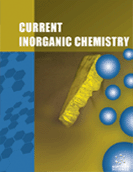Abstract
Background: Keplerate-type capsules represent unique supramolecular objects displaying a tuneable spatially-restricted environment and are promising in many domains. In particular, some recent reports demonstrate that chemical transformations can occur specifically within the cavity, then acting as a nano-reactor. Some authors evidenced that the porous capsule provides internal active sites for catalytic transformation. In this idea, we recently succeeded to synthetize Keplerate capsules incorporating dicarboxylate anions, offering available coordination site for transition metals inside the Mo132 nanocapsule.
Objectives: The aim of this study was to introduce a chiral ligand potentially relevant for organocatalysis inside the porous Keplerate nanocapsule, i.e. L-proline, which is known for promoting various activation modes in asymmetric aminocatalysis.
Methods: The work described herein first focuses on the internal functionalization of the [(MoVI 6O21)12(MoV 2O4)30(H2O)72L30]n- nanocapsule with cyclopentanecarboxylate ligand which can be viewed as a model of L-proline in terms of size. FT-IR, X-ray diffraction and solution and solid-state NMR studies were performed in order to unambiguously evidence the formation of new Mo132 derivatives. In a second part, different strategies were attempted in solution to functionalize Mo132 capsules by L-proline. NMR studies in solid state and in solution were employed to monitor this process.
Results: In this report, new cyclopentanecarboxylate-containing Keplerate compounds have been synthesized and characterized in the solid state and in solution. The 1D and DOSY 1H NMR spectra supported by X-ray crystallographic analysis are consistent with 22 to 25 ligands coordinated over the 30 {Mo2O4} linkers. Solid state 1H and 13C MAS NMR performed on the new described compound (NH4)50[Mo132O372(H2O)72(CPC)22(SO4)8]. 120H2O provided further characterizations of ligand substitution within the capsule by carboxylate ions. In a second part, the encapsulation of L-proline in Mo132 was investigated by different strategies. In solution, no substitution of sulfate or acetate ligands in the Mo132 precursors was observed in aqueous solution. DOSY 1H NMR studies evidenced that the cationic part of this molecule interacts with the surface of Mo132. A direct synthesis method was then attempted by mixing molybdate, L-proline and hydrazine in water at pH = 4. It led to an insoluble dark brown powder, for which the FT-IR spectrum, the elemental analysis and the solid state NMR are in agreement with a compound of formula (NH4)12[Mo132O372(H2O)132](L-proline)60 in which the L-proline are located outside the capsule and probably allow the formation of a network between L-proline molecules and ligand-free [Mo132O372(H2O)132]12- capsules.
Conclusion: A new Keplerate compound has been discovered with cyclopentanecarboxylate ligands. Attempts for encapsulation of L-proline ligands within the cavity of Mo132 revealed unsuccessful but we isolated a powder with formula (NH4)12[Mo132O372(H2O)132](L-proline)60 in which the L-proline are located outside the capsule. It probably interacts with the surface of Mo132 capsule through the cationic part of this molecule, a phenomenon which surely competes with the encapsulation of the latter. Moreover, the low pKa value (1.95) of the carboxylate function of L-proline compared to that of the cyclopentanecarboxylate (4.90) appears as a second key criteria for the encapsulation or the non-encapsulation of ligands within the cavity of Keplerates.
Keywords: Keplerate, hollow molecules, L-proline, solid state NMR, DOSY NMR, catalytic transformation.
 26
26 2
2 2
2 1
1


